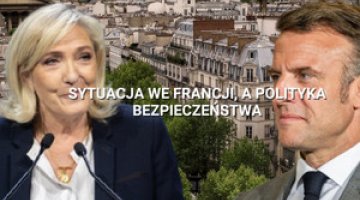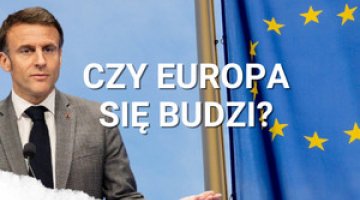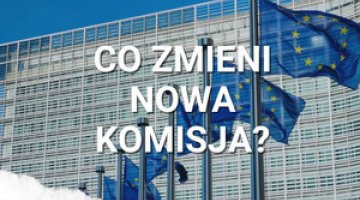An EU War Chest: the success and uncertain future of the European Peace Facility

On 26 June the Council of the EU raised the ceiling for the financing of the European Peace Facility (EPF) for the second time this year, this time by €3.5 billion. It will now total €10.5 billion at 2018 prices or around €12 billion at current prices (adjusted for inflation). The EPF is designed as an off-budget mechanism for financing the common costs of the EU’s offshore military operations and missions as well as assistance to its partners. Since 24 February 2022, it has served predominantly as an instrument for providing indirect military support to Ukraine. This continuing repurposing of the EPF is beginning to raise concern among those member states which are focused on the EU’s southern neighbourhood and which used to be the main supporters of the Facility. There is, moreover, a risk that some EU countries will treat support for further increases in EPF funding as a bargaining chip on issues that are important to them, or make it conditional on a stronger link between the EPF and initiatives to strengthen the EU’s Defence Technological and Industrial Base (EDTIB).
Fund for crisis response in the southern neighbourhood
The initiative to establish the EPF was put forward in 2018 by Federica Mogherini, the EU High Representative for Foreign Affairs and Security Policy. This was part of the implementation of the 2016 EU Global Strategy, which was aimed at making the EU adopt a more ambitions Common Security and Defence Policy (CSDP). It was argued that the mechanism was placed outside the EU budget to enable a quick and flexible response to security crises in the EU’s environment. The EPF was intended to merge and expand the financing of activities under the already existing extra-budgetary CSDP mechanisms: Athena (financing EU military operations and missions) and the African Peace Support Facility (financing the peace support operations of the African Union and other regional organisations). Not all member states responded positively to the initiative[1] partly due to concerns that the position of the High Representative would be too strong and that the EU would become too focused on its southern neighbourhood.
The final shape of the EPF was determined in the Decision of the EU Council of 22 March 2021 after two years of negotiations.[2] It consists of two pillars: one for military operations (financing the common costs of EU military operations) and one for assistance measures (actions for the benefit of third countries and parties). Its budget for 2021–7 has been set at €5.69 billion (€5 billion at 2018 prices), although Mogherini suggested €10.5 billion. Member states pay contributions in proportion to their gross national income. The management of the EPF is the result of a compromise and is rather complex (see Appendix). it has its own legal capacity which is separate from the EU. As in other areas of the Common Foreign and Security Policy (CFSP), here too any member state may “abstain constructively”. This means that a country can opt out of participating in a military operation or mission or providing an assistance measure (such as munitions, weapons, military equipment and other war materials) without blocking the actions of other EU members. The EU security strategy, the so-called Strategic Compass, was adopted in March 2022 and stresses the importance of the EPF as a mechanism to encourage member states to deploy their own forces as EU troops and to build the capacity of the partners.
The first beneficiaries of the EPF in the period from July to December 2021 were: the African Union (€130 million for peace support operations), Mozambique (€45 million for equipping forces trained by the EU training mission) and Bosnia and Herzegovina (€10 million for mine clearance). In December 2021, the EU Council decided to allocate the first funds to the countries in the EU’s eastern neighbourhood: €31 million for the Ukrainian army to buy medical and logistical equipment and to improve cybersecurity, €12.75 million for Georgia (medical and engineering equipment and transport), €7 million for Moldova (support for military medicine and engineering troops). In addition, €24 million has been allocated to support Malian troops trained by the EU training mission in Mali.
Russian aggression as a breakthrough
The Russian full-scale aggression against Ukraine has had a major impact on the functioning of the EPF, as regards both the scale of the funds allocated and the geographical directions of their distribution. On 27 February 2022 the Council of the EU decided to indirectly finance the supply of arms and other military equipment to Kyiv from the EPF up to €500 million, which was equivalent to 90% of the facility’s budget planned for 2022. As much as €450 million was to be allocated for the reimbursement of lethal weapons offered by the member states to Ukraine (the remaining €50 million was to be spent on other types of equipment); this was a breakthrough in psychological terms. The EPF envisaged such an option, but before the Russian invasion it was seen as the most controversial form of military support.
A further six tranches of €500 million each to refinance member states’ military assistance to Ukraine were approved between March 2022 and February 2023. The acceptance of the eighth has been blocked since May this year by Hungary, which in exchange for overriding the veto has demanded that the Hungarian bank OTP be removed from the Ukrainian list of “international war sponsors”. In fact, its veto is part of Budapest’s general policy of obstructing military aid to Kyiv in order to put pressure on other EU member states in other areas.[3] In addition, the EPF will reimburse member states for the costs of the ammunition transferred to Ukraine (€1 billion based on the EU Council’s decision of 13 April), and will also finance joint purchases of ammunition and missiles from European production plants (€1 billion based on the EU Council’s decision of 5 May). The EPF also pays for the EUMAM Ukraine training mission. Its aim is to train Ukrainian soldiers in Poland and Germany, including how to operate Leopard tanks, mine clearance, bridge construction, military medicine, etc. By June, 24,000 soldiers had been trained.[4]
So far, the military aid for Ukraine approved under the EPF stands at €5.6 billion, while only around €1.3 billion has been allocated for all other beneficiaries (Africa, Middle East, the Western Balkans, Georgia and Moldova). Since the original EPF funding ceiling for the seven-year term had been exceeded, the member states had to raise it by €2 billion last December and then by €3.5 billion in June this year. The EPF’s total budget for 2021–7 (both used and unused) currently stands at €10.5 billion at 2018 prices, or around €12 billion at current prices. However, the allocation of funds to beneficiaries is extended over time, which is causing dissatisfaction among the countries most involved in aiding Ukraine. In 2022, the upper limit of EPF disbursements was €590 million, while €980 million has been planned for this year. The largest annual amounts of refunds are foreseen for the period 2024–7 (respectively: €2.785 billion, €2.38 billion, €2.425 billion and €2.48 billion).
The EPF’s success and the new dilemmas
The EPF has met the expectations of those who believed that the new mechanism should be flexible and should enable the EU to act quickly in regions particularly important in terms of its strategic interests. Those member states, that feared that the EPF would be directed primarily to crisis areas in the southern neighbourhood, have turned out to be the main beneficiaries of the funds as a result of the Russian invasion of Ukraine and the joint decision of EU countries to provide significant assistance to Kyiv. Poland expects payments of €800–900 million under decisions passed by March this year.
However, the way the EPF has functioned to date has also provoked controversy. Some member states (France, Italy, Spain and Hungary) fear that as it is focused primarily on aid for Ukraine, this could mean that other geographical areas may be underfunded, especially the EU’s southern neighbourhood, while it was support for this region that was supposed to be the priority and the reason for its creation. The discussion on the second increase in the funding ceiling led to an inclusion of the reservation in the Decision of the EU Council of 26 June this year (amending the Decision on the establishment of the EPF) which stated that it be used “in a manner that preserves the global geographical scope of the Facility”, and it will be up to the EPF Committee to decide on this matter (see Appendix). Another contentious issue was the amount of reimbursement of the costs of arms and military equipment transferred to Ukraine by the member states. There have been accusations that some countries are overstating the value of the equipment supplied in order to buy modern equivalents for their armies using EPF funds. In this context, the member states, which support the expansion of the EDTIB (above all France), are concerned about arms purchases made outside the EU.
Expected problems
The EPF Committee is to decide by September this year on the allocation of the recently increased funding ceiling to individual missions and assistance measures, including in geographical terms. It is possible that a smaller part of the €3.5 billion will be allocated to Ukraine. The consensus reached so far on the further use of the EPF as a fund for reimbursing military aid offered to Kyiv will be increasingly difficult to keep, as demonstrated by the still unapproved eighth tranche. Individual member states may attempt to pursue their own interests when using the CFSP decision-making process (where unanimity is generally required) and when participating in the debate over the resources for the Facility and their allocation. This, in turn, may be used as an argument in the ongoing discussion on the EU’s institutional reform, including also applying qualified majority voting in the area of CFSP.
The readiness of EU member states to further increase the ceiling for financing the EPF in the future may depend on the progress of the Ukrainian counteroffensive, the course of possible peace negotiations and the manner in which the funds are allocated, as some regions may benefit more than others. Additional money for the EPF may also become an element of a parallel discussion on the increase in funds for the EU’s multiannual financial framework for 2021–7, which some member states are unwilling to do.
The suggestion made on 26 June this year by High Representative Josep Borrell to separate a special Ukrainian defence fund from the EPF would fit in with the implementation of the objective of supporting Kyiv “for as long as it takes”, which was re-included in the conclusions of the European Council of 29 June this year. As with the proposal put forward in February this year by Estonian Prime Minister Kaja Kallas regarding joint arms purchases for Ukraine, it would also be an element of the EU’s readiness to contribute to future commitments to ensure Ukraine’s security. Countries focused on the stability of the EU’s southern neighbourhood, in exchange for possible support for these proposals, will demand what they view as a more balanced distribution of funds between individual geographical areas. In turn, countries which are generally reluctant to allocate funds for military aid to Ukraine, such as Hungary, may continue to delay this process, using their resistance to achieve other goals of their own in the EU.
Moreover, given the gradual depletion of transferable arms and equipment stocks by member states, further operation of the EPF will increasingly depend on the success of other European initiatives to support the development of the EDTIB, including the Act in Support of Ammunition Production (ASAP).
APPENDIX
Management of the European Peace Facility
- The strategic priorities for operations and assistance measures are set by the Council of the EU and the European Council (e.g. in their conclusions). The launch of an operation or assistance measure requires, in principle, a decision of the Council of the EU.
- The strategic lines of action for operations and assistance measures (thematic and geographical) are set, in accordance with the strategic priorities defined by the Council of the EU and the European Council, by the Political and Security Committee (PSC), i.e. the ambassadors of the member states.
- The management of the EPF is controlled by the EPF Committee, which is composed of representatives of each contributing member state. Each meeting is chaired by a representative of the country currently holding the Presidency of the Council of the EU. The Committee adopts the Facility’s annual budget and approves its annual accounts. It also sets a funding ceiling in a way that preserves its “global scope”, as well as the overall amounts for operations and assistance measures under the EPF “to ensure its financial sustainability”. It takes decisions unanimously, except for procedural issues. If the Committee fails to reach a compromise, it may refer the matter to the Council of the EU.
- Under the authority and direction of the EPF Committee, the day-to-day management of the EPF is carried out by two administrators and two accounting officers (the administrator and the accounting officer for operations are appointed by the Secretary-General of the Council of the EU, and the administrator and accounting officer for assistance measures are appointed by the High Representative).
- The roles of the High Representative and the PSC are important at different stages of the complex procedure for preparing and subsequently approving the concept note of the mission or assistance measure and the negotiation process with the beneficiary of that support.
[1] J. Gotkowska, A European Defence Union? The EU's new instruments in the areas of security and defence, OSW, Warsaw 2019, osw.waw.pl.
[2] J. Gotkowska, ‘The EU's security and defence policy: in search of a compass’, “OSW Commentary”, no. 408, 17 September 2021, osw.waw.pl.
[3] I. Gizińska, A. Sadecki, ‘Another Hungarian veto aimed at Ukraine’, OSW, 23 May 2023, osw.waw.pl.
[4] A. Wilk, P. Żochowski, ‘More intensive arms supplies and training for the Ukrainian army. Day 344 of the war’, OSW, 3 February 2023, osw.waw.pl.




